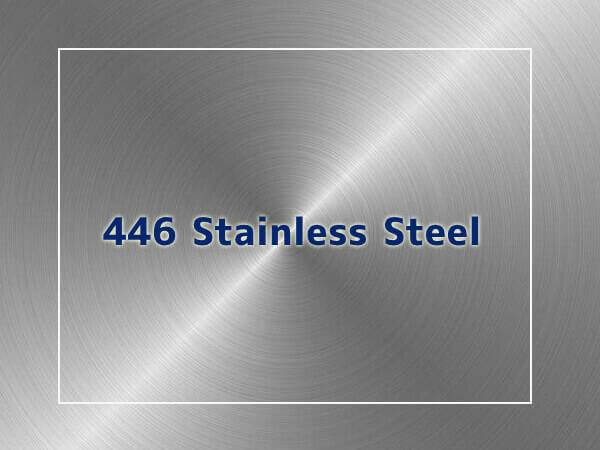
446 Stainless Steel is a high-temperature stainless steel, also known as AISI 446 Stainless Steel. It is a ferritic stainless steel with good resistance to high-temperature oxidation and corrosion, especially in oxidizing environments. 446-grade Stainless Steel contains elements such as chromium, molybdenum, and aluminum, which can improve its high-temperature resistance and corrosion resistance. In addition, 446-grade stainless steel has good mechanical properties and machinability, which can be used to manufacture high-temperature equipment and chemical industry equipment, etc.
446 is the only red copper and brass heat-resistant alloy that can withstand melting. Compared to other high-chromium ferritic stainless steels, 446 becomes brittle in the 700-1000°F temperature range (885°F embrittlement), and 446 should not be used at this temperature unless a reduction in ductility at room temperature is acceptable. Sigma phases indicate that embrittlement occurs at extended 1000-1300°F service temperatures.
446 Stainless Steel Composition
| Grade | C | Si | Mn | P | S | Cr | Ni | N | Fe |
|---|---|---|---|---|---|---|---|---|---|
| 446 | 0.20 | 1.00 | 1.50 | 0.040 | 0.030 | 23 – 27 | 0.75 | 0.25 | Bal |
446 Stainless Steel Mechanical Properties
| Grade | Tensile Strength MPa (Min) | Yield Strength 0.2% MPa(Min) | Elongation % | Hardness (Brinell) MAX | Hardness (Rockwell B) MAX |
|---|---|---|---|---|---|
| 446 | 515 | 275 | 20 | 217 | 96 |
446 Stainless Steel Equivalent
- UNS S44600
- EN 1.4749
- ISO X15CrN26
446 Stainless Steel Features
- High corrosion resistance;
- weather resistance;
- High strength;
- Magnetic;
- Cannot be hardened by heat treatment.
Machinability
Machinability of the 446-grade stainless steel is possible at slow speeds with positive feeds, rigid mounts and sharp tooling surfaces.
Welding
The grade 446 grade stainless steel can be easily welded using most of the traditional methods except oxyacetylene welding. Type 308 welding material can be used if required, but it will not exhibit scaling resistance equal to the base metal. Differences in the coefficient of thermal expansion of base and weld metal have to be taken into consideration.
Forging
Forging can be started at 1149°C (2100°F) and completed at 871°C (1600°F). The last 10% of forging has to be performed below 871°C (1600°F) to gain grain refinement and room temperature embrittlement.
Hot Working
The hot working of grade 446 grade stainless steel is performed in between the ranges 1093- 1177°C (2000-2150 °F). The last 10% of hot working has to be performed below 871°C (1600°F) to gain grain refinement
Cold Working
The Grade 446 stainless steel is more difficult to cold work than other stainless steels due to the high level of chromium content.
Annealing
Annealing of the grade 446 stainless steel has to be soaked at 816°C (1500°F) and then water quenched. The temperature should not exceed 900°C (1650°F) at any time and slow cooling below 649°C (1200°F) can cause loss of ductility.
Forms
S44600 plate, bar, tube, strip, wire, forging, forging pipe, forging plate, bar, round bar, sheet, seamless pipe, welded pipe, round steel, wire rod
Applications
- Manufacture of high-temperature equipment: such as furnaces, stovepipes and hearths;
- heat exchangers: for heat exchange of high-temperature gases or liquids;
- chemical equipment: such as pipes, valves, etc;
- petrochemical industry: such as cracking furnace tube bundles, naphtha condensers, etc..
